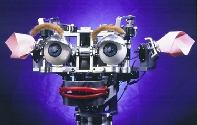
Many say our Founding Fathers won independence simply due to effective military strategy. They exploited their smallness — seemingly appearing out of nowhere and just as easily melting back into their surroundings. In this way the greatly out-gunned militia of George Washington prevailed over King George II and his army. This same approach helped the Viet Cong, keeping the Vietnam War in a stalemate until the U.S. withdrew. If you’re a small business, or a small competitor in a tough business segment, you can tear a page from these playbooks to win dominance on search engines.
But first, you need to understand which battles are worth winning. With modern search engines, the most important area to focus your efforts is backlinks. I’ve blogged before about their importance, offering seven types of backlinks to pursue.
Here are three ways to use smallness to your advantage in finding and exploiting search engine opportunities:
- Remind yourself that being great isn’t enough. You may build the best mousetrap ever. That doesn’t count. You have to also be strategic. In his book The Sirens Titan, Kurt Vonnegut, Jr. writes, “There is no reason why good cannot triumph as often as evil. The triumph of anything is a matter of organization. If there are such things as angels, I hope that they are organized along the lines of the Mafia.” Organize your search engine strategy “along the lines of the Mafia.”
- In keeping with Rule #1, look for vulnerabilities. Find the unique qualities of your product or service that cannot be reproduced by your competitors. Specifically, find how these unique characteristics can induce popular sites to link to you and no one else in your industry. As an example: Your company generates electricity, and does so in a way that is unmatched, in that it leaves a significantly smaller carbon footprint. That opens the door for backlinks from “green” directories and blog sites that your competitors cannot follow you onto. Each of these placements can be a huge win for your site.
- Be ready to turn on a dime. It’s something that smaller, more guerrilla-style fighters can do that their slower enemies cannot. Don’t look at your larger peers and mimic the pace with which they adapt to new market conditions. Instead, push your limits, and discover just how fast you can react. Then watch them struggle to keep up.
If you apply these three rules you’ll be well on your way to search engine victory. Often, your competitors won’t even know what hit them until it’s too late!
